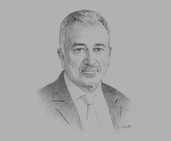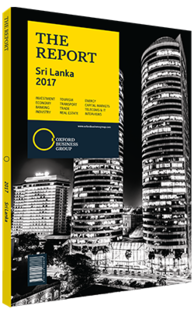Malik Samarawickrama, Minister of Development Strategies and International Trade: Interview

Interview: Malik Samarawickrama
What actions are needed to engage foreign direct investment (FDI) and broader trade?
MALIK SAMARAWICKRAMA: Sri Lanka, being a small island nation, has to attract FDI in order to bridge the gap between domestic savings and investment so as to move to a high-growth trajectory for competition with other emerging nations. Expansion and liberalisation of trade enables the creation of larger markets, which will attract investment as well. Investment is long-term and in this context, having consistent and coherent trade and investment policies is essential. Apart from creating an enabling environment to attract FDI through the adoption of a single-window system, other regulatory and administrative reforms are being looked into, such as fast-tracking investment approval and clearance, and improving the ease of doing business in Sri Lanka.
The government is also already in the process of negotiations on three comprehensive bilateral trade and investment agreements, including the Economic and Technology Cooperation Agreement with India, which will deepen the current India-Sri Lanka Free Trade Agreement (FTA) in goods, and broaden the scope to include services, investment, trade facilitation, and economic and technological cooperation. Similarly, comprehensive FTAs are being negotiated with China and Singapore, all of which are expected to be completed within the first half of 2017. The proposed Agency for International Trade and Agency for Development are being created primarily to address these projects.
Furthermore, the government is finalising its international trade policy as an integral part of its development strategy to link with global markets and the global value chain. While our main competitors have moved forward with FTAs, thus expanding their market access opportunities, we have become inward-looking and protectionist. We need to do some course correction, which is happening now.
In addition, Sri Lanka expects that by March 2017 the EU will restore the Generalised System of Preferences Plus concessions to the country. This should help to open up the market for a wide range of goods like apparel and rubber-based products, and also open up investment opportunities for exporting to the EU, thus creating economic growth as well as employment opportunities.
What competitive advantages does Sri Lanka hold over its regional neighbours?
SAMARAWICKRAMA: Sri Lanka is an outlier in the South Asian Association for Regional Cooperation (SAARC) in many respects. It was one of the first member nations to reach a middle-income level, it achieved a UN Human Development Index of 0.757 in 2013 – close to that of Japan, Vietnam and Malaysia – and has a literacy rate of over 93%. Its unique geographic location in the Indian Ocean; a highly literate, educated and trainable youth; high biodiversity; a rich cultural heritage; modern infrastructure; and a clean and green environment which improves quality of life, all make Sri Lanka different from its neighbouring SAARC member nations.
How do you see the future of the economy?
SAMARAWICKRAMA: The recent merger between the two major political parties gives the nation an opportunity to bring about prudent, coherent and consistent policies that should transform the Sri Lankan economy into what it truly deserves to be: one with sustainable and inclusive growth, able to merge with the globalising world while creating opportunities for all Sri Lankans. Sri Lanka is committed to economic reform and to the removal of anti-export biases by rationalising a currently distorted tariff policy and by creating an enabling environment to allow domestic industries to be internationally competitive and integrated into the growing global economy.
You have reached the limit of premium articles you can view for free.
Choose from the options below to purchase print or digital editions of our Reports. You can also purchase a website subscription giving you unlimited access to all of our Reports online for 12 months.
If you have already purchased this Report or have a website subscription, please login to continue.

